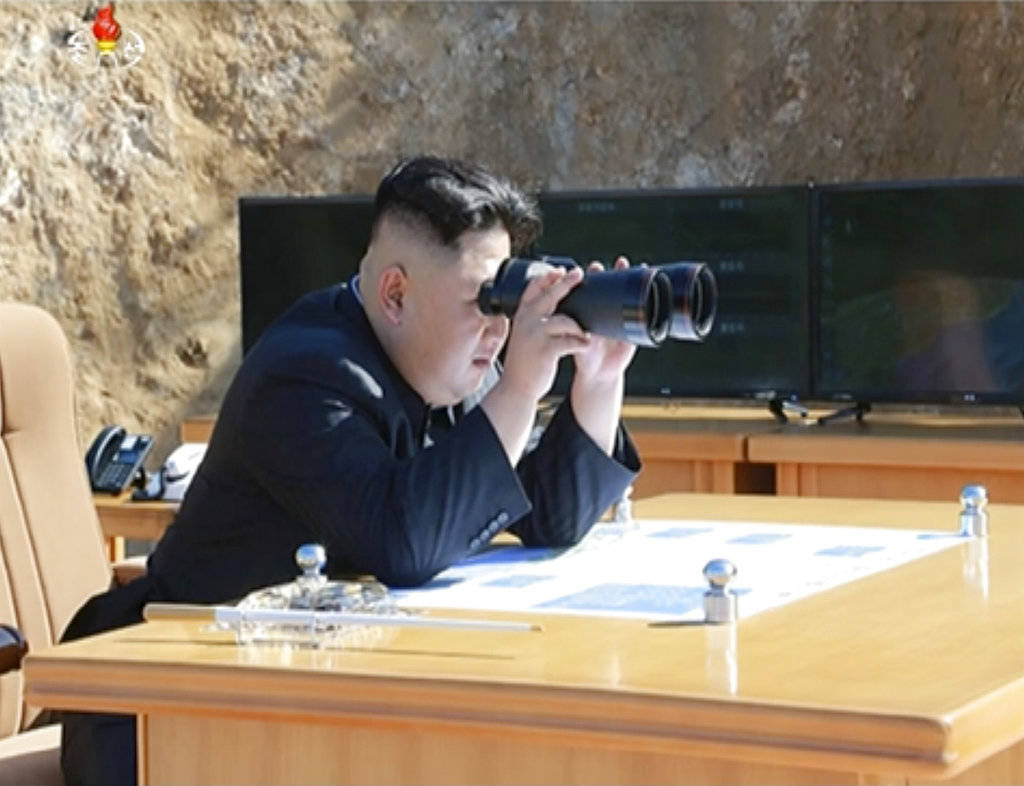SEOUL, South Korea — If North Korea’s claim Tuesday of its first ICBM test-launch is true, it has barreled over a red line that the world has long called a tripwire for potential nuclear disaster.
As always with North Korea, however, it’s hard to tell how wide the gulf is between reality and rhetoric.
Analysts, for instance, believe the latest missile may be able to hit Alaska, a marked improvement on past efforts and potentially placing it in the intercontinental ballistic missile category, but far from backing North Korea’s claim it can now “strike anywhere on Earth.”
Skeptics will also ask how North Korea can claim mastery of such a complicated technology after only one test.
That said, the message from North Korea seems clear: If not stopped, it is now only a matter of time before one of the most dogged countries on Earth achieves its goal of being able to hit all parts of the United States.
Here is what Tuesday’s potentially game-changing claim might mean:
Why it might be an ICBM
The claim has the air of the inevitable for some North Korea watchers.
The country has, with single-minded determination, been devoting its best and brightest, and a huge amount of its tiny financial resources, to this goal for generations.
The pace has quickened dramatically under leader Kim Jong Un, who took over in 2011. Since late 2012, North Korea has placed two satellites into orbit with long-range rockets, which outsiders see as clandestine tests of missile technology.
Last year, North Korea conducted its fourth and fifth atomic bomb tests and claimed a series of technical missile and atomic breakthroughs.
After what North Korea said in March was a ground test of a new type of high-thrust rocket engine, Kim Jong Un was quoted as saying that the “whole world will soon witness what eventful significance the great victory won today carries.”
Outside analysts say the missile’s potential range, if fired at a normal trajectory, could be more than 3,750 miles, which would make it technically an ICBM.
Why it might not be
It is difficult, maybe impossible, for outsiders to understand exactly what happened in the launch.
“It’s something that only North Koreans would know,” said Kwon Sejin, a professor at the Korea Advanced Institute of Science and Technology in South Korea.
Maj. Gen. Cho Han Gyu, director of operations at South Korea’s Joint Chiefs of Staff, told a televised briefing that the missile showed an improved range over an intermediate-range missile North Korea tested on May 14. But he said South Korean and U.S. intelligence authorities are trying to determine if the North had indeed fired an ICBM.
Some doubt whether North Korea has mastered the technology needed to build a re-entry vehicle that is crucial for returning a warhead to the atmosphere from space so it could hit its intended target. Or whether North Korea can build a warhead small enough to fit on a long-range missile.
Chae Yeon-seok, a professor at South Korea’s University of Science and Technology, said radar and satellites can track a missile’s flight but not the specifics of the missile’s technology. “We cannot verify if a warhead lands in the ocean without any problem,” he said.
Why it doesn’t really matter
Persistence.
North Korea, whose ethos of self-reliance is akin to a national religion, has for decades sought to build weapons that can combat U.S. and South Korean “hostility.”
Nothing has stopped the country’s tenacious progress — not sanctions, not threats, not diplomacy.
A U.S. and South Korean attack would end North Korea’s ruling class, but it would also kill huge numbers of South Koreans who live an easy drive from the world’s most heavily armed border.
This means that without finding the right solution, it may only be a matter of time before reality matches North Korea’s propaganda, which on Tuesday called the test the “final step toward completing the nation’s nuclear military strength.”
• Associated Press writer Hyung-jin Kim contributed to this report.

